Navigation Workshop
Charles Burchill
Several years ago I setup a navigation workshop for
UofM Recreation Services. The following is the outline
of the workshop.
This workshop will provide a basic introduction on the use of
Topographic Maps, Compasses, and GPS receivers. It is primarily
directed at those heading off into the woods and water ways. If you
need help finding your car at the St. Vital shopping centre, or your
friends house on Liberty Ave then this workshop might not be for
you. The workshop is broken into two sections: 1. In class basic
theory and 2. Field exercise.
Theory
This section provides a brief overview of topographic maps,
compasses and GPS. It will cover some very general information on
navigation and associated tools. Some other navigation related topics
will be touched on such as: where reallly moss grows, using a watch to
determine north (sometimes), following the stars, using the sun, why we walk in
circles, and some other fun things that people do.
- General introduction to maps
- Topographic map
- Symbols and Features
- Reading contours
- Map scale
- Grids (Lat/Long, UTM (MGRS).
MGRS repeats at 100,000m intervals so either
identify map name/number or
UTM Zone and grid reference.
- What is a datum and why should you care?
- Orienting the map and finding yourself (UTM/MGRS)
In class task using UTM/MGRS
- Measure distance (string, straight line), determine slope.
- Traveling with a map (orientation, landmarks, features).
- Issues with maps (warnings, pitfalls, and other mistakes)
| 
|
- Compass
- How a compass works (magnetic), types, parts
- The baseplate (orienteering) compass. This
workshop deals mainly with this kind of compass.
- Bearing measurements - what is a bearing?:
Degrees (360)
Mils. For our purposes this divides a circle into 6400 units.
This measure is primarily used to help compute a
new direction based on an error in an old direction and
is used when aiming
artillery. The formula is:
mils = lateral distance * (1000 / distance to target)
For example: a 12 mil change would result in a 12 meter movement per 1000 meters distance.
- Bearings, Baselines, Backtracking (a hobbits' story)
- How to take and walk a bearing (how to read compass)
- Issues and Limits (common pit falls and errors)
| 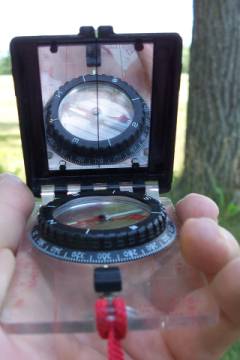
|
- Map and Compass
- Declination, Where is North? True, Grid, Magnetic - I am
so confused!
How much difference does it really
make? Magnetic north moves; you need to adjust for time since publication.
- Compass (magnetic) bearing to Map (grid)
- Map (grid) to Compass (magnetic) bearing
- Finding your self (triangulation or X marks the spot), Base lines
- Issues with Maps & Compass together.
| 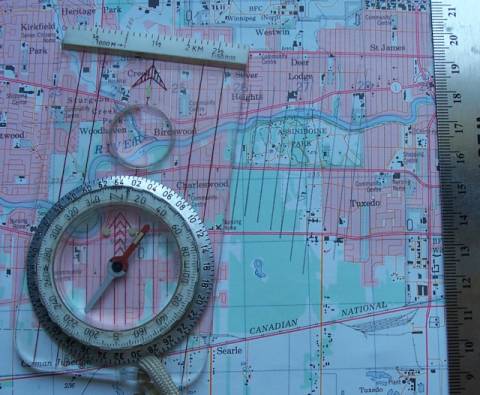
|
- GPS
- What is GPS, how does it work
- Should I really buy a GPS receiver?
- Location (only knows point)
- Transfer location to/from map
- How it measures speed & direction
- Getting & setting points and bearings for working with a
map and in the field
- Issues and limits
| 
|
Field
The field exercise will give participants the opportunity to try out
the use of a map and compass in the field. The field portion is done
at Assiniboine Park.
- Reading a map
- Finding location on a map, and going there
- Walking a line using a compass.
- Marking a bearing on a map & correcting for declination.
- Identifying your location on a map based on triangulation
- Using a baseline & finding a point along that line
- Identifying a point on a map, taking a bearing and walking to that point.
- Walking around objects and continuing
- Marking a point with GPS (find the point on Map)
- Find point on map and transfer to GPS.
- Finding a point with GPS and compass (get bearing from GPS, use compass to walk bearing)
- Finding a point with GPS alone
| 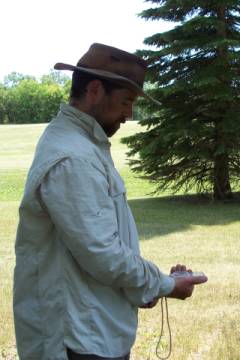
|
Map used in workshop (PDF
file)
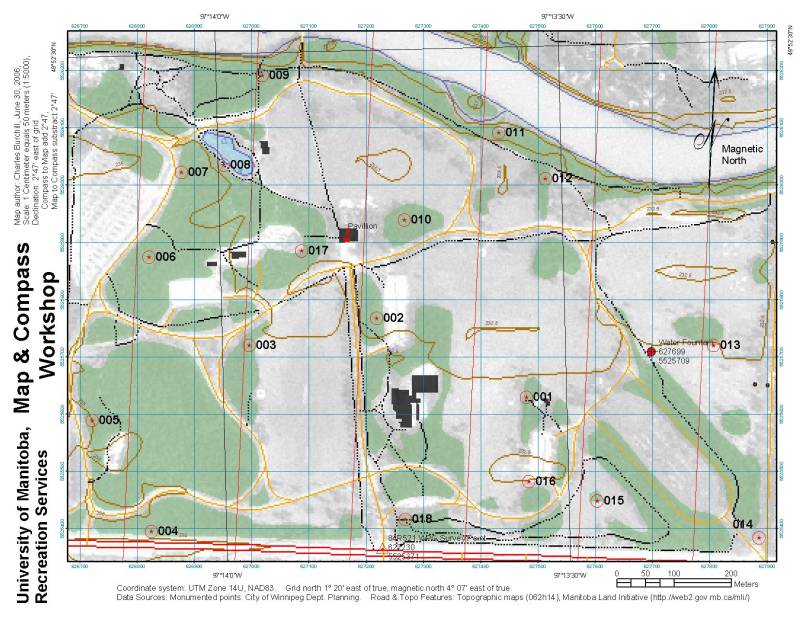
Numbered points on this map are the permanent orienteering course
markers for Assiniboine Park. The course was setup by the Manitoba Orienteering Association
Inc in cooperation with the City of Winnipeg Parks and Recreation
Department.
Handouts
GPS Workshop
Back to C. Burchill's Home Page
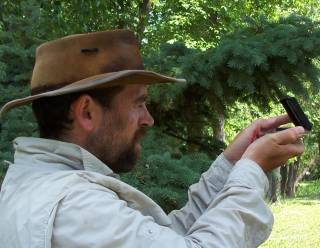
If you have any questions or comments please send me
Email: burc...@cc.umanitoba.ca
Last modified: Sat Oct 23 07:13:08 2010






